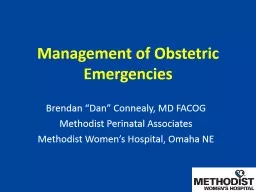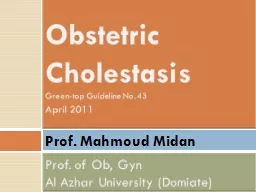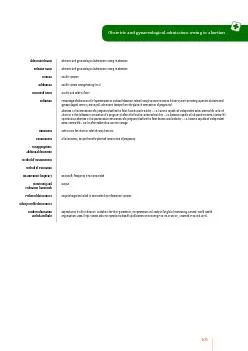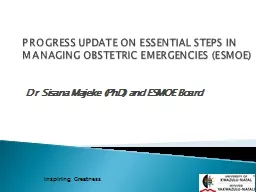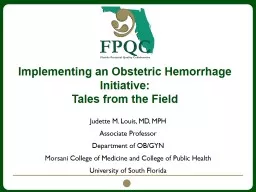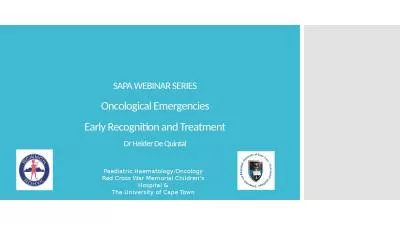PPT-Management of Obstetric Emergencies
Author : olivia-moreira | Published Date : 2019-11-20
Management of Obstetric Emergencies Brendan Dan Connealy MD FACOG Methodist Perinatal Associates Methodist Womens Hospital Omaha NE Learning Objectives Hypertensive
Presentation Embed Code
Download Presentation
Download Presentation The PPT/PDF document "Management of Obstetric Emergencies" is the property of its rightful owner. Permission is granted to download and print the materials on this website for personal, non-commercial use only, and to display it on your personal computer provided you do not modify the materials and that you retain all copyright notices contained in the materials. By downloading content from our website, you accept the terms of this agreement.
Management of Obstetric Emergencies: Transcript
Download Rules Of Document
"Management of Obstetric Emergencies"The content belongs to its owner. You may download and print it for personal use, without modification, and keep all copyright notices. By downloading, you agree to these terms.
Related Documents

